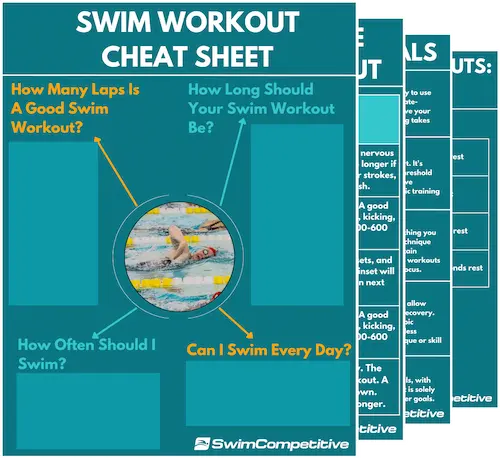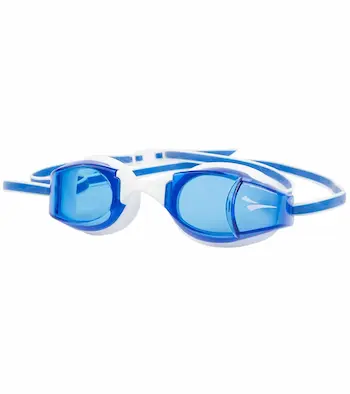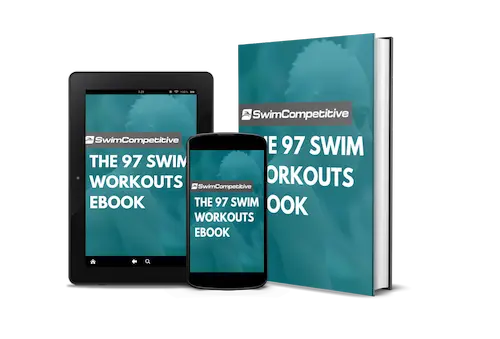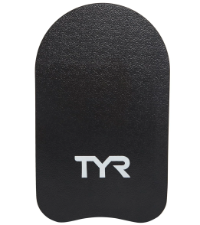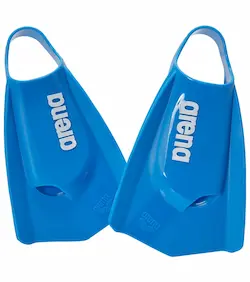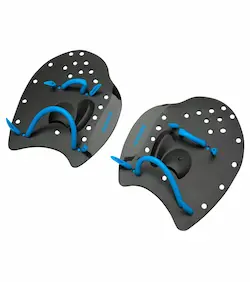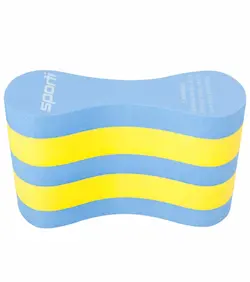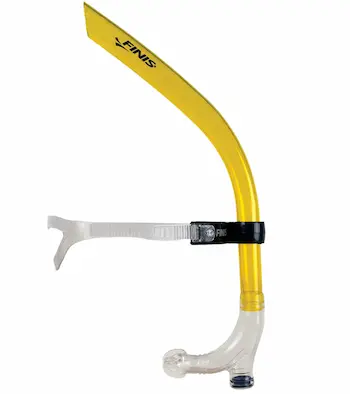You may be able to run a mile or cycle 5 without much effort, but when it comes to the pool it’s a whole different ball game and you may feel tired after swimming a mere 50 meters. Or you might not be fit at all in which case it’ll be even harder for you. That said, don’t worry! Because in today’s article we’ll be taking a look at a 5 step strategy you can use to master the 50-meter swim.
Keep in mind, it will take some time and you’ll have to go out, hop in the pool, and work on the things that we’ll discuss in this article a few times a week, but if you stick to the plan I guarantee that it shouldn’t take you more than a few weeks to be dishing out 50s left, right, and center like it’s nobody’s business. So with that said, let’s get right to it.
Focus on these things if you are tired after swimming 50 meters-
- Master your swimming technique.
- Utilize training equipment to help you build up fitness.
- Slowly work your way up to the 50-meter mark.
- Incorporate interval training into your swimming workouts.
- Improve your stamina outside of the pool.
1. Master Swimming Technique and Efficiency
The first step in swimming an effortless 50 meters is going to be technique. Without some basic swimming technique, you aren’t going to get very far as you will be using a lot of energy to swim and you won’t be very efficient in the water.
For starting out, we’re going to learn freestyle technique, also known as the front crawl. You may already have a basic understanding of the stroke but stick around as I’ll be sharing a lot of important details.
Body Position
Whenever you are learning a new stroke or trying to improve on the technique of a stroke you can already swim, you want to narrow it down to the body position first before working on anything else. The body position is the foundation of your stroke and without a good body position, you aren’t going to be getting very far.
For the freestyle body position, you want your body to be as flat as possible in the water. Try to keep your body in a straight horizontal line as you swim with your head in a neutral position looking down towards the floor of the pool. Avoid moving your head from side to side or up-and-down as you swim, it should be in a still position.
Here is a quick visual explanation if you need it-
Arm Mechanics
In swimming, the arm stroke is always broken down into 3 separate stages that come together to form a unified and efficient stroke. Let’s take a look at the freestyle arm mechanics-
The catch: This is the first portion of your stroke and it starts the moment your hand enters the water. During this phase, you’ll be setting your grip in the water so that you can create optimal propulsion when pulling.
As your hand enters the water you want to stretch forward so that you can feel a stretch running down your lat. After that, you’ll bend your arm down so that it creates a 90° angle with your fingertips facing the bottom of the pool.
Make sure to pull with both your hand and your forearm throughout the entire arm stroke to maximize your swimming efficiency.
The pull/push: The next phase is where most of the propulsion gets generated during the arm stroke. During this phase, you want to pull or push the water backward, whichever way you like to think about it, as long as you are making sure to move the water backward to create forward propulsion. You don’t want to be pulling in towards your body neither out to the side, you must pull straight back.
To start this phase you’ll pull your arm back, straightening it as it moves down so that there is no longer a 90° bend in the elbow. Then you’ll pull back on the water until your arm exits at the back.
The recovery: The final phase of the arm stroke is the recovery. This phase occurs from when your hand exits the water until it enters it again. During this phase, you can use a straight arm recovery or a bent arm recovery, whichever works for you. Long-distance swimmers typically prefer the bent arm while sprint swimmers prefer the straight arm.
The Kick
The kick is very basic and shouldn’t take you long to learn. You are essentially just doing a flutter kick behind you as you are swimming. The most important thing here is to make sure that your hips don’t drop and you maintain that high body position in the water.
Make sure that you are kicking from your hips. The kick should start in the hip as it rotates around your core muscles. From there the power will transfer through your knee and ankle as your foot flicks out.
Aim to keep your ankle relaxed at the start of the kick, then as you kick down extend your foot and point your toes to end the movement.
Once you’ve got the basics down you can play around with things like kicking tempo. There are many to choose from for example- a 2 beat kick, 4 beat kick, 6 beat kick, and so on. The higher the tempo the faster you’ll swim.
I recommend starting with the 2 beat kick as this is the easiest to learn. For a 2 beat kick, you’ll perform 1 kick for each arm stroke, meaning 2 kicks per arm cycle. For a 4 beat kick, you’ll perform 2 kicks for every arm stroke, allowing for 4 kicks in total per arm cycle.
Here’s a quick video to explain it more visually-
Related: Leg exercises for swimmers.
Head Position
The freestyle head position is an important aspect to focus on as it is a small detail that can have a big effect on your stroke and swimming efficiency.
For freestyle, you want to use a neutral head position with your eyes facing the bottom of the pool, looking just in front of you. You don’t want to pull your head in too much as this will create resistance, but neither do you want to look directly in front of you as this will cause your hips to drop, also significantly increasing drag.
Here’s a quick video-
Did you know that the FINIS Smart Goggles can help you improve your head position? It does this by using data for the goggle to create a 3D simulation directly in the CIYE swim app, enabling you to improve your head position while swimming.
The FINIS Smart Goggle is the most innovative smart swimming goggle available.
Directly display and track your laps, splits, set time, rest time, stroke rate, and more in your goggles with the non-intrusive heads-up display while swimming.
Breathing
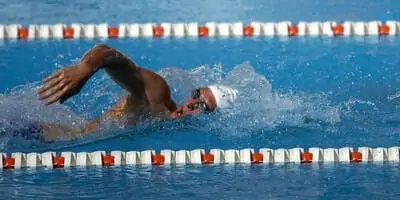
It goes without saying that breathing is a very important part of your freestyle swimming stroke. Not only do our muscles require oxygen to function and perform properly, but you also have to use efficient breathing technique to optimize efficiency and speed in the pool.
Here are some quick pointers for more efficient breathing while swimming freestyle-
Only breath to one side: In freestyle swimming, you only want to breathe to one side. Usually, this will be on the side of your dominant arm. It will be a quick lift of the head where you’ll take a breath and put your face back in the water.
If you are worried about muscle imbalances forming over time due to one-sided breathing you can consider breathing to a specific side on certain days. For example- breathe to your right side on Mondays, and breathe to your left side on Wednesdays.
Breaths per arm cycle: Next is the number of breaths per arm cycle. An arm cycle consists of 2 strokes. For starters, you will breathe a minimum of one time per arm cycle. You never breathe more than once per arm cycle as this will mean that you’ll be breathing to both sides which is also very inefficient.
You can, however, breathe less than this. For example, you may choose to take 1 breath for every 2 or 3 arm cycles as you progress with your swimming.
Exhale under the water: This is a very simple, but important part that you want to apply to your freestyle breathing technique. When your head is under the water you want to be exhaling making sure to empty your lungs. You can exhale either through your nose or mouth, whatever you find works for you.
Then as you come up to take a breath, your lungs will already be empty, meaning you can just inhale and then place your head back into the water which is the most efficient position for swimming.
Use Long Strokes
The last aspect that I want you to focus on for developing an efficient freestyle stroke is going to be your stroke length. Many swimmers have short strokes which isn’t the most efficient way to swim.
As your hand enters the water to start the catch phase you want to reach forward as if you are trying to touch someone in front of you. This will create a stretch running down your lat. Make sure to reach as far as you can before starting to create the bend in your arm.
This will maximize your distance per stroke, ultimately maximizing your swimming efficiency in the water as well.
Do You Want to Make Every Lap Count?
Stop wasting your time in the pool feeling lost and doing directionless swim workouts, and start training effectively! Our ebook contains 97 structured and goal-orientated swim workouts to help you become a better, faster, and fitter swimmer. Whether you’re a complete beginner or a seasoned pro, there are a multitude of workouts for every type of swimmer.
2. Use Swimming Training Equipment
Swimming training equipment can be useful for helping you to drill in your technique or for slowly building up some base fitness and endurance while you are still learning to swim freestyle properly.
Here are some useful pieces of equipment that you can use as well as some ideas for incorporating them into your workouts-
Kickboard: As the name suggests, the kickboard can be used for working on your kick and building up some extra leg strength and endurance. This is also a useful tool to use when you are just starting out and struggling to swim 50 meters. Incorporate a set of 10x50s kicking to work on the lower half of your stroke!
Quick Summary: The TYR Kickboard is the perfect kickboard featuring simplicity, performance, and durability for all swimmers. The kickboard has a traditional design and is constructed from highly-durable 2-inch close-cell EVA foam. Additional chlorine resistance ensures durability.
Fins: These will help to propel you forward in the pool, but they’ll also help to increase your leg strength and endurance. Throw on some fins when swimming to complete the distance easier while simultaneously improving your kicking mechanics and ankle flexibility. If you want to, you can use your fins and kickboard together to create a nice kicking set.
Quick summary: The Arena Powerfin Pro is a premium swimming fin made from durable 100% silicone material. Its short inclined blade and hydrodynamic slits enable high-frequency kicking, improving leg strength and power.
Additional cuts on the bottom increase kick power. The open-heel design maximizes ankle flexibility, providing a comfortable fit.
Paddles: Like fins, paddles can add some propulsion onto your arm stroke by helping you to pull more water. They can also help you to get a better feel for the water so that you can work on all of the different arm mechanic elements. You can also use your paddles and fins simultaneously.
Quick summary: The Sporti Power Swim Paddles are an affordable budget option available in three sizes. They feature a large surface area for developing a powerful pull and upper body strength.
The hydrodynamic, flat design ensures proper pulling technique and easy entry and control in the water. Other features include a raised palm area, adjustable and replaceable straps, and a durable, lightweight construction.
Pull Buoy: The pull-buoy is going to let you focus on the upper half of your stroke and will also help you to learn proper body position by elevating your hips in the water. Consider using your paddles and pull-buoy together to nail down on the upper half of your stroke.
This budget-friendly buoy features a durable EVA foam construction and an equal-width design for convenience. While slightly smaller in size, it still provides functional buoyancy.
With adult and junior options and a variety of colors, the Sporti Pull Buoy offers affordability and functionality for swimmers of all levels.
Snorkel: The snorkel is a bit more advanced and you may not necessarily need it, but it’s definitely a nice piece of training equipment to have around. The snorkel can help you to focus purely on swimming by removing the head tilt for breathing from your stroke.
3. Slowly Work Your Way Up to 50 Meters
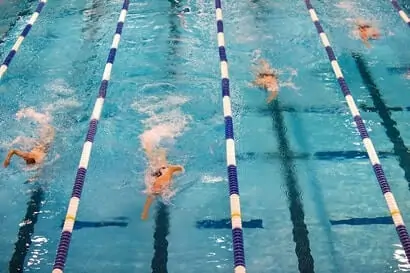
Now once you’ve got your equipment ready and you know the basics of what you need to work on to learn the freestyle stroke, we can start working on improving your swimming fitness by working our way up to that 50-meter mark and beyond.
Start by doing single 25m laps focusing on the technique we discussed. Also, incorporate your swimming equipment and add things like 8x25s kicking, then 8x25s pulling with a pull buoy and paddles, and then maybe doing something like 20x25s with fins and a snorkel.
If you are swimming in a long course pool (50-meter pool), consider only going half a length and then turning around and swimming back.
As you progress you can slowly start adding a 50 in here and there until it finally becomes easy and you can do all of those little sets in 50s instead of 25s.
I recommend doing this for about 4-6 weeks. In the first 3 weeks focus solely on training at 25m distances. In the fourth week start incorporating some 50s and then increase the number of 50s from there up until week six. I should also mention that you should preferably swim a minimum of 3 times a week for 30 minutes per workout starting out, but it can definitely be more if you’re up for it.
4. Incorporate Interval Swimming

Once you can swim some 50s with good technique and less effort than before it is time to really start drilling in everything that you’ve learned over the past few weeks by making it more challenging. We are going to this by incorporating some interval swimming.
By now you can probably swim up to a 100m without stopping, but the idea of interval training isn’t necessarily to do more distance, but rather to increase the intensity of your swimming.
For example, you can start by doing 8x50s on 2:00, then the following week you do 8x50s on 1:50, then 1:40, and so on. Once you reach 1:20 you should be in a really good position and then you can start thinking about maybe making the set a bit harder and doing 10x50s on 1:30 or something like that.
5. Improve Your Stamina Outside of the Pool
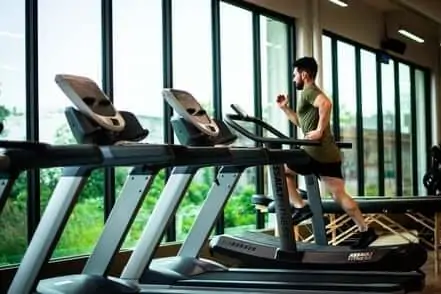
There are endless things to work on in the water and chances are that you can swim for years and years on end and you’ll still have technical aspects to work on and improve. That said, the pool can sometimes get a bit boring and repetitive, especially if you are training on your own.
That’s why I recommend incorporating some other forms of cardio training into your schedule as you progress in your swimming. You can do these workouts on the days that you don’t swim to build up some extra endurance and stamina and to switch things up a bit.
Here are some of my favorite cardio workouts outside of the pool-
- Jump Rope.
- Running.
- Cycling.
- Rowing.
- HIIT training.
Train to Swim 50 Meters
Swimming is a great workout to build up cardiovascular fitness and endurance and to improve your overall health. Sure, it can be a bit harder to get into than some other forms of exercise, but once you’ve got it down, you’ll thank yourself for not giving up.
Swimming has many technical elements to focus on giving you a lot to do in the water. There are also hundreds of different workouts to try out, and if you really enjoy it you may opt to swim a competition or two.
Anyway, I hope you found this article helpful and that you are now ready to go and take on that 50-meter swim. Hopefully, next time I see you you’ll be dishing out 200s or maybe even more!
